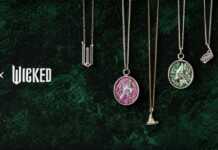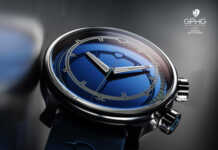
Although the mine is scheduled to close in 2020, ending the most prolific source for such gems, the mystique of pink diamonds will endure.
The publicity surrounding Argyle’s sales helped make the world more aware of pink diamonds, as did the celebrated engagement ring featuring a 6.1 ct pink diamond from Argyle that actor Ben Affleck presented to Jennifer Lopez in 2002. While that engagement didn’t work out, pink diamonds from Argyle and other sources became the cornerstone of major auctions, often selling for several million dollars per carat.
GIA graded all of the major Argyle pinks offered through its tender sales, as well the vast majority of major pink diamonds appearing at auction at Sotheby’s and Christies, including the 24.78 ct Fancy Intense pink diamond that London jeweller Laurence Graff paid $46 million for in 2010, making it the world’s most expensive diamond at the time, and the 18.96 ct Winston Pink Legacy that brought more than $50 million last year.
Employing GIA’s treasure trove of information on more than 90,000 natural pink diamonds graded between 2008 and 2016, GIA researchers Sally Eaton-Magaña, Troy Ardon, Karen V. Smit, Christopher M. Breeding and James Shigley produced the most detailed and comprehensive gemological analysis of pink diamonds to date, published in the Winter 2018 edition of the Institutes quarterly journal, Gems & Gemology. The study enables us to better understand how these rare and beautiful diamonds formed and the properties that give them their colour.
The sample set of 90,000-plus diamonds includes all those submitted to GIA from 2008-2016 with pink as a primary colour but spans the colour range from red to purple and saturation range from faint to dark. Many of those 90,000 diamonds were small, with low colour saturation.
The highest percentage of these (40%) were unmodified pink (more than half of which were Faint, Very Light or Light), followed by pinkish purple to purplish pink (28%), brownish pink to pinkish brown (17%) and orangy-pink (10%). The study also included some unmodified brown diamonds with similar characteristics to pink diamonds, red diamonds, red diamonds with brown, purple or orange modifiers, and unmodified purple diamonds.
This article confirms that the colour in the vast majority of pink diamonds comes from deformations in their crystal structure, not from trace elements such as nitrogen (yellow) or boron (blue). Nitrogen-related defects, however, do play a role in modifying pink colours and aiding the overall colour saturation.
In many of the diamonds examined, the stone is actually colourless with colour concentrated in extremely narrow bands referred to as pink (or brown) glide planes (called coloured lamellae in previous research studies) and others that have graining with body colour in areas between the grain lines. These were caused by the extreme stress of exposure to high temperatures over prolonged periods of time and plastic deformation – a distortion of the original shape and its crystal lattice from highly stressful natural forces. Plastic deformation is also believed to be the cause of the broad absorption band centred around the visible (under spectroscopic analysis) 550 nm line that is the cause of the pink colour.
The GIA research scientists found a number of differences, or types, of lamellae, depending on the sources of the diamonds. Some are very distinct and straight along the planes, while in others, the lamellae can be subtle, wavy and perhaps more difficult to spot.

Color Distribution
Colour distribution of 90,000+ pink, purple, brown, orangy pink, and red diamonds graded at GIA between 2008 and 2016. Left: Unmodified pink and purplish pink diamonds dominated within this colour range, while diamonds with a brown colour description were submitted in lower quantities. Right: Saturation distribution of unmodified and modified pink diamonds. A majority of the unmodified pink samples (54%) are in the Faint to Light colour range.
Of the 90,000-plus, a subset of 1,000 GIA-examined pink diamonds was randomly selected for more in-depth study. In a very small percentage, six out of the 1,000 examined, colour was found to be caused by a combination of nitrogen and a vacancy (an atom missing from the crystal structure) at the atomic level. These are so-called “Golconda Pinks,” and their mine origins are much more difficult to identify due to very little source locality information.
Pinks from the most prolific source, Argyle, are Type IaA<B, a subgroup of Type Ia diamonds (containing nitrogen) where the nitrogen atoms are grouped in two specific patterns: A (in which nitrogen atoms are paired) and B (where four nitrogen atoms are clustered around a vacancy), with the B group outnumbering the A. These Type IaA<B diamonds are also found in other locations, including Siberia.
Of the pink diamonds tested for fluorescence in long-wave ultraviolet light, 73% showed blue and 11% yellow, with the remainder showing none or other colours. Interestingly, exposure to higher energy ultraviolet light causes many pink diamonds to temporarily change colour – to yellow, brown or near colourless. The diamond’s color reverts back to its original hue, but the length of time can vary from a few minutes to more than a day, depending upon the intensity of the light.
As diamond treatments and manufacturing techniques for laboratory-grown diamonds proliferate, the data from these observations become a critical identification tool.
For example, there is no known method of treatment that will create the 550 nm line in a laboratory. Also, there is no way to artificially create the colour lamellae of most Type Ia pink diamonds. It is possible to enhance the colour of some brownish pink diamonds by the
HPHT process, which reduces the brown while enhancing the pink hue. These can be readily identified by photoluminescence spectroscopy. More important to identify are the rare natural Golconda pinks, because most treated pink diamonds and pink laboratory-grown diamonds derive their colour from a similar mechanism – the nitrogen-vacancy centers. Generally, natural Golconda pinks tend to have pale colours, while the lab-grown and treated diamonds are more highly saturated. Additional testing, such as at a gemological laboratory, is recommended to determine the cause of colour in such diamonds.
GIA continues to build its database of these rare diamonds to better understand their properties and to keep ahead of advances in treatments and synthetics manufacturing.

















